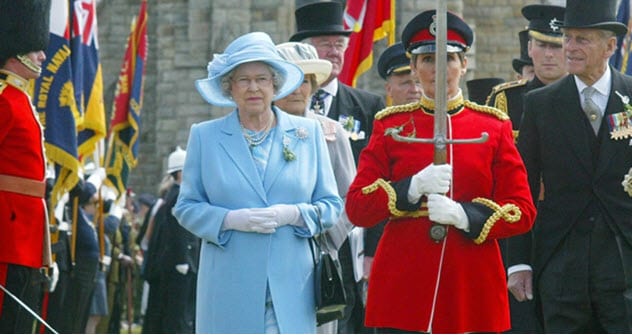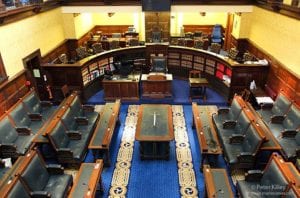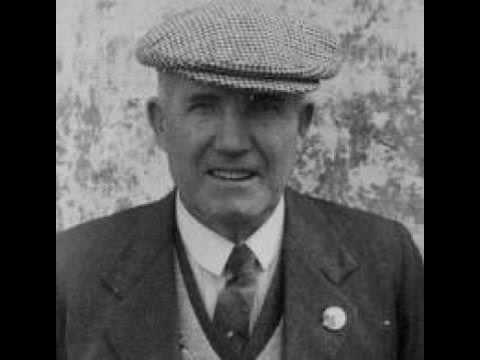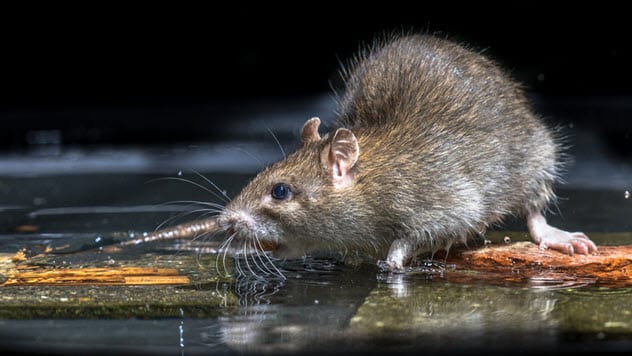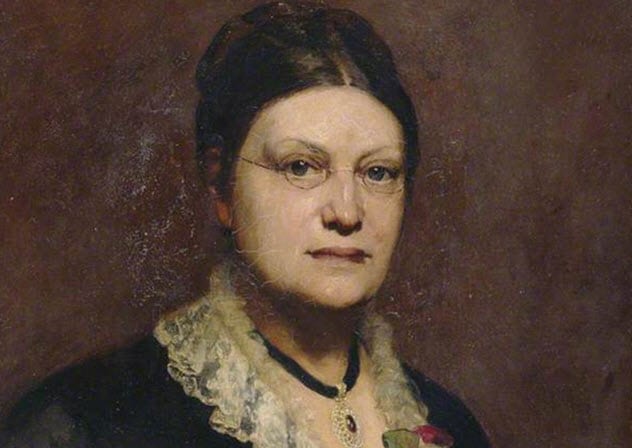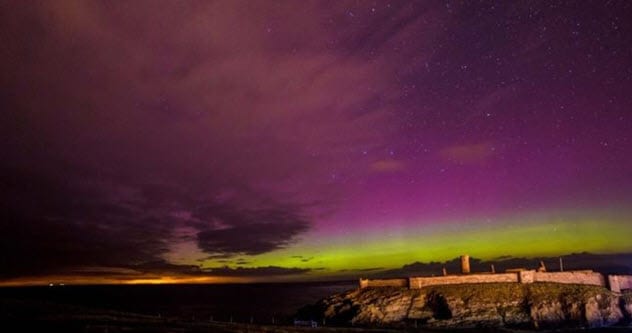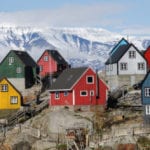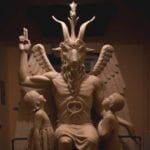Castle Rushen, one of Europe’s best-preserved medieval castles, is among the island’s greatest attractions. The Isle of Man also holds the world’s largest working waterwheel, which used to provide water to the mines. And there are a dozen ancient and Neolithic sites to explore. The Isle of Man is especially convenient for tourism as most of the island can be seen by traveling on a network of heritage railways powered by steam, electricity, and even horsepower. The capital city of Douglas can be explored with horse trams, which have been around since 1876 when tourism began booming in Victorian times. But there are many other things besides heritage that make the Isle of Man an interesting place. Here are only a few examples.
10 Geography
Positioned in the middle of the Irish Sea, the Isle of Man is roughly equidistant between Ireland, England, Scotland, and Wales. The island measures roughly 53 kilometers (33 mi) long and 21 kilometers (13 mi) wide. There is only one mountain on the island, Snaefell, which stands at 621 meters (2,037 ft) tall. Ireland, England, Scotland, and Wales can be seen from the mountain’s summit. Hills stretch obliquely across the island, and well-defined valleys lie between. Long sandy beaches surround the island’s flat northern plain, in contrast to the rocky cliffs that take up the rest of the coastline. More than two-thirds of the landmass is cultivated. According to the 2016 Isle of Man Census Report, 83,314 people inhabit the island. This represents a 1.4 percent decrease from the 84,497 residents recorded in the previous census. The average resident is 42.5 years old, and almost a third of the residents live in the capital town of Douglas.[1]
9 Crown Dependency
Despite its location, the Isle of Man has never been a part of the UK. Instead, it is one of the three island territories within the British Isles that are known as Crown Dependencies. Bailiwick of Guernsey and Bailiwick of Jersey are the other two. The Crown Dependencies are self-governing possessions of the British Crown—aka the Queen—not the United Kingdom. Instead, the Lord of Mann was the titular ruler of the island until 1765 when the crown purchased the feudal rights, and the title was transferred to George I. Today, the Queen still has the title of Lord of Mann (even though she is a woman, she is still known as Lord, not Lady). When making the Loyal Toast on the Isle of Man, they toast the Lord of Mann, not the Queen or King. They do use the British Pound, and the UK does have the responsibility of the island’s defense. That said, it’s not a member of the European Union, and because it’s not technically part of the UK, it’s often used as a tax haven for the British.[2] The symbol on the Isle of Man flag is the Triskelion. While it looks like something someone with a bunch of spare doll parts mashed together, the triskelion is actually an ancient Celtic symbol that, like many Celtic symbols, relies on rotational symmetry and a triple spiral. On Mann, the triskelion is known as the Three Legs of Mann or Tree Cassyn Vannin in Manx. Despite how it looks, it has nothing to do with a swastika.
8 Oldest Parliament
Tynwald, the Isle of Man Parliament, consists of two branches—the House of Keys, which has 24 elected members, and the Legislative Council, which the House of Keys mostly chooses. Meanwhile, the UK government is responsible for the defense and international relations of the island. Tynwald is also the oldest continuous parliament in the world, with the legislative system introduced around AD 800 when the Isle was a part of the Norwegian Kingdom of the Isles. It’s worth noting that several countries lay claim to this title, but the Manx parliament has been standing without a break ever since 979. The parliament in Iceland has been around since 930, but it was suspended from 1800 to 1845. San Marino claims to have been a republic since 301, but the same legislative body hasn’t been ruling it that entire time. Here are some notable items legislated by the parliament. The taxation system in the Isle of Man is completely separate from that of its neighbors. There is no capital gains tax, stamp duty, or inheritance tax. The standard rate is only 10 percent for personal income tax, and the higher rate is 20 percent. Additionally, there is a tax cap of £175,000 per person on the total payable income. The Isle of Man even has its own currency—the Isle of Man pound (IMP). However, it has the same value as the British pound sterling, which is also widely accepted. Low taxes and various tax reliefs have encouraged many wealthy individuals and families to settle on the island. But for companies, the most appealing part of the taxation system is the standard zero corporate tax rate. However, a higher rate of 10 percent applies to bank activity and retail businesses with annual taxable profits of £500,000 or more. Due to the 0 percent corporate tax rate introduced in 2006, the Isle of Man is now known as an excellent center for company administration and services.[3]
7 Manx Language
Manx (aka Manx Gaelic), an ancient language closely related to Irish and Scottish Gaelic, still bears traces of Old Norse due to the number of times that Vikings set foot on the island. Although the language was brought to the Isle of Man by settlers around the fifth century AD, it really emerged as a distinct language in the 13th–14th centuries after the collapse of the Norse Kingdom of Mann and the Isles. Until 1765, almost the entire island’s population spoke Manx. That changed with the Isle Of Man Purchase Act 1765 (aka the Act of Revestment), by which the Duke of Atholl sold the island to the British Crown. Immigration from North West England also sped up the decline of Manx during the 18th and 19th centuries. Starting in the 1830s, large numbers of English-speaking tourists further contributed to the shrinking number of Manx speakers. Due to the language’s decline, Yn Cheshaght Ghailckagh—The Manx Language Society—was founded in 1899. By the 1960s, only two native speakers of Manx remained. UNESCO officially declared the Manx language extinct in 2009, a while after the last native Manx speaker Ned Maddrell died in 1974. However, the island’s residents are now using music, schooling, and Twitter to help revive their ancestors’ mother tongue. David Harrison, a lecturer who has studied endangered languages for the past 20 years or so, believes that this is a wonderful comeback story. “It impressed me so much because it was a language that defied the odds against survival,” he said. “As with many endangered languages, the Manx people have been made to think their language is worthless,” said Harrison. “These negative attitudes get internalized by communities, which causes them to let go of their language. They had to reverse this mentality.”[4] A key part of the language’s revival has been Bunscoill Ghaelgagh, a primary school that teaches almost entirely in the Manx language. In response to UNESCO listing the language as effectively dead, several children from Bunscoill Ghaelgagh wrote letters asking the organization: “If our language is extinct, then what language are we writing in?” The classification has since been changed to “critically endangered.” While it does not illustrate actual fluency, more than 1,800 people claim to speak, read, and write Manx today.
6 Manx Cats
The Manx cat breed is well-known for its tail—or the lack of it. Manx kittens can be born with full-length tails, stubby tails, or no tails at all. And all the lengths can appear in a single litter. Manx cats with normal-length tails are referred to as “longy,” short tails are known as “stumpy,” and completely tailless felines are called “rumpy.” As the Isle of Man did not have an indigenous feline species from which the Manx could develop, it is surmised that settlers and explorers introduced cats. It is uncertain how or when the first cats arrived on the island. One story says that cats were aboard a ship of the Spanish Armada that wrecked on the Isle of Man in 1588. Another tale claims that Phoenician traders transported the cats from Japan. Yet another story says that cats arrived with the Viking settlers who colonized the island.[5] Regardless of how the cats got there, they presumably arrived with their tails intact. Thanks to modern-day geneticists, we now know that the Manx’s “taillessness” was likely caused by a spontaneous mutation within the Isle’s domestic cat population. Manx cats and other short-tailed domestic cats are quite different genetically. The Manx’s tail is governed by an incomplete dominant gene, while most short-tailed breeds have tails governed by recessive genes. Due to the Isle’s closed environment and small gene pool, the dominant gene was easily passed down through generations. Unaware or unimpressed by boring scientific theory, the Isle of Man inhabitants invented far more interesting tales to explain why Manx cats have no tails. One suggests an impossible mix between a cat and a rabbit. Another claims that the cats’ tails were stolen by Irish invaders and used for helmet plumes. A third story says that two Manx cats were the last passengers on Noah’s Ark and Noah slammed the door on their tails.
5 Superstition
As any land with a long and checkered history, the Isle of Man is rife with legend and superstition. Stories of ghosts, goblins, giants, and other creatures which supposedly inhabit the island hold more than a grain of truth to the Manx people. For example, consider the Little People of Fairy Bridge. You cannot be certain that your visit will be safe and pleasant if you do not even say as much as laa mie (“good day”) to the fairies while crossing the bridge which lies just past Santon Station on the main Douglas-Castletown road. There are also stories of the ghostly black dog of Peel Castle and Gef the talking mongoose who haunts the lonely mountain farmhouse. On April 30, many islanders fix a wooden cross bound with sheep’s wool to the inside of their front door to ward off malicious fairies. Blowing horns on Peel Hill on the same night is believed to banish evil spirits. However, the most common superstition on the Isle has to do with the three-letter “r” word for vermin. The fear of the word “rat” originated alongside other sea taboos. Believed to attract bad luck or bad weather, certain words were never mentioned aboard ships. Instead, rats are commonly referred to by other terms. “Longtail,” “ringie,” “joey,” or the native Gaelic word roddan are considered acceptable. Many people on the Isle of Man spend their entire lives without ever uttering the “r” word. Even people who move to the Isle often dodge the term, either from a genuine fear of bad luck or to avoid shock and outrage from the locals.[6]
4 Voting Rights
Women’s suffrage (aka women’s right to vote or female suffrage) is the right for women to vote in elections. The first signs of the suffrage movement can be traced to the French Revolution in the 18th century, but it was not particularly successful until the late 19th and early 20th centuries. Surprisingly, the small Isle of Man led the way for millions of women worldwide. Tynwald, the Isle of Man parliament, became the first national parliament to allow women to vote in 1881. Some rules remained. All males, spinsters, and women over age 21 had to be fairly wealthy (own or occupy their own property to the value of £4 or more) to cast their votes. Despite these conditions, it was a major step toward gender equality which was followed by New Zealand in 1893 and Finland in 1906. Lydia Becker, leader of the suffragette movement in Manchester, was largely responsible for this controversial change. She visited the island and addressed five public meetings in 1880, awakening a desire for change among her female audiences. Tynwald was also one of the first parliaments to allow 16-year-olds to vote in 2006.[7]
3 Northern Lights And Stargazing
The aurora borealis, better known as the northern lights, occurs when incoming solar radiation hits the Earth’s upper atmosphere and excites atoms to a new energy state, emitting energy in the form of light. This phenomenon is best seen from northern latitudes, including Norway, Alaska, Iceland, and northern parts of Scotland. But thanks to relatively low air and light pollution, the Isle of Man is a great place to observe the northern lights and stargaze in general. Some photographers and tourists even travel to the island solely to enjoy the night sky. There are 26 official dark sky sites dotted around the island, and many astronomical sights can be seen with the naked eye. This includes the Orion Nebula over 1,500 light-years away, the Milky Way galaxy, and the Andromeda galaxy whose light has been on its way to us for about 2.5 million years.[8]
2 Wild Wallabies
Wild wallabies are native to Australia and its island state of Tasmania. Although they are used to warmer climates, a wild wallaby population has been flourishing on the Isle of Man ever since a pair escaped from a wildlife park in the 1970s. The animals graze on grasslands and forage willows and young shrubs. Scientists and researchers believe that their success in the wild is mainly because of a lack of predators and competitors. There are now believed to be over 100 wild wallabies living on the island. While they have normally confined themselves to the north of the island, a few have also been spotted in the south. Paige Havlin, a graduate of Queen’s University Belfast, has been filming and researching the marsupials. “My research method used camera traps, which are small camera boxes that can be attached to a tree or post and which capture videos when triggered by movement,” said Havlin. She stated that she noticed a few concerning signs: A very small minority of these wallabies appeared to have blindness; when individuals did appear to be blind (presenting as a cataract-like milky layer on one or both of their eyes), the problem was usually accompanied by other ailments such as an inner ear infection, characterized by a tilted head. Given that it is likely there have been more escapes over the years than have been reported, it is likely the gene pool is much larger than just the genes from the often-quoted pair of escapees, and there have been no obvious signs of the effects of inbreeding. A genetic study of the population, though, would be required to fully dispel this myth.[9]
1 Motorcycle Racing Capital
As motorcycle racing fans may already know, the annual Isle of Man Tourist Trophy (TT) competition has been held on the island since 1907. The UK parliament influenced the event’s location by passing an act that forbade riders from exceeding 32 kilometers per hour (20 mph) in 1903. Thanks to their independent parliament, the Isle of Man did not have to comply with the act and officially permitted road racing in 1904. Today, racers compete every June for two weeks on closed public two-lane country roads at speeds exceeding 322 kilometers per hour (200 mph), making it the most dangerous motorcycle race in the world. This often-lethal event is held on the world’s oldest active motorcycle racing course. Since 1907, the 60.72-kilometer-long (37.73 mi) Snaefell Course has claimed more than 250 lives, including a few race officials and unfortunate spectators. Unlike closed-course tracks, the roads used in the event were not built for the purpose of racing. Comprised of various surface types, the roads are rough and uneven. Stone walls, lampposts, curbs, trees, and buildings line the entire TT course. The track is also full of hills, turns, and corners. The preparation necessary to take part in the TT is staggering. Not only does it take years to memorize the course, but competitors have to participate in several other races just to be eligible for the TT. One of the two weeks consists of qualifying and practice, while the second week is made up of actual racing. The residents have learned to appreciate and rely on the event to support and sustain their small, primarily tourist-based economy. Over 40,000 race fans are welcomed to the island each year, and many stores, restaurants, and hotels open exclusively for the TT.[10]

